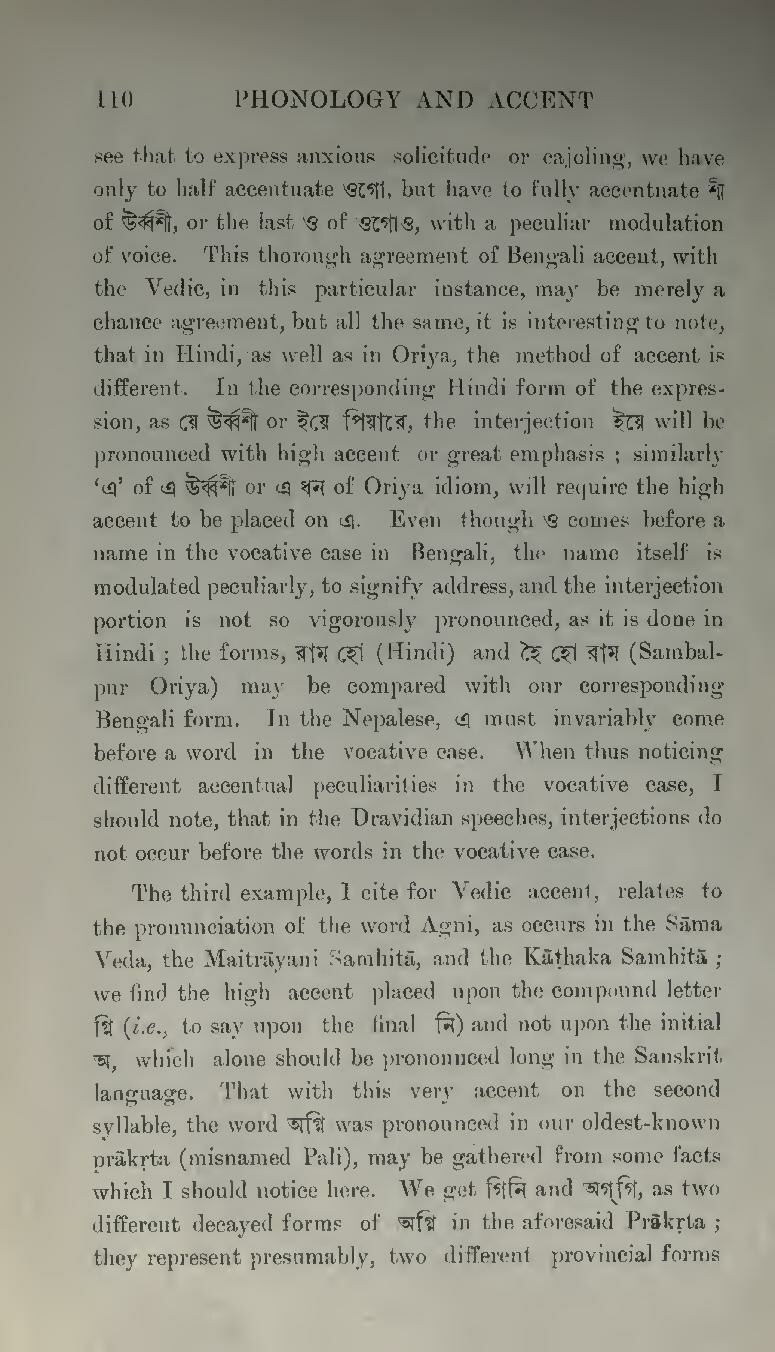see that to express anxious solicitude or cajoling, we have only to half accentuate ওগো, but have to fully accentuate শী of উর্ব্বশী, or the last ও of ওগোও, with a peculiar modulation of voice. This thorough agreement of Bengali accent, with the Vedic, in this particular instance, may be merely a chance agreement, but all the same, it is interesting to note, that in Hindi, as well as in Oriya, the method of accent is different. In the corresponding Hindi form of the expression, as য়ে উর্ব্বশী or ইয়ে পিয়ারে, the interjection ইয়ে will be pronounced with high accent or great emphasis; similarly 'এ' of এ উর্ব্বশী or এ ধন of Oriya idiom, will require the high accent to be placed on এ. Even though ও comes before a name in the vocative case in Bengali, the name itself is modulated peculiarly, to signify address, and the interjection portion is not so vigorously pronounced, as it is done in Hindi; the forms, রাম হো (Hindi) and হৈ হো রাম (Sambalpur Oriya) may be compared with our corresponding Bengali form. In the Nepalese, এ must invariably come before a word in the vocative case. When thus noticing different accentual peculiarities in the vocative case, I should note, that in the Dravidian speeches, interjections do not occur before the words in the vocative case.
The third example, I cite for Vedic accent, relates to the pronunciation of the word Agni, as occurs in the Sāma Veda, the Maitrāyani Samhitā, and the Kāṭhaka Samhitā; we find the high accent placed upon the compound letter গ্নি (i.e., to say upon the final নি) and not upon the initial অ, which alone should be pronounced long in the Sanskrit language. That with this very accent on the second syllable, the word অগ্নি was pronounced in our oldest-known prākṛta (misnamed Pali), may be gathered from some facts which I should notice here. We get গিনি and অগ্গি, as two different decayed forms of অগ্নি in the aforesaid Prākṛta; they represent presumably, two different provincial forms
